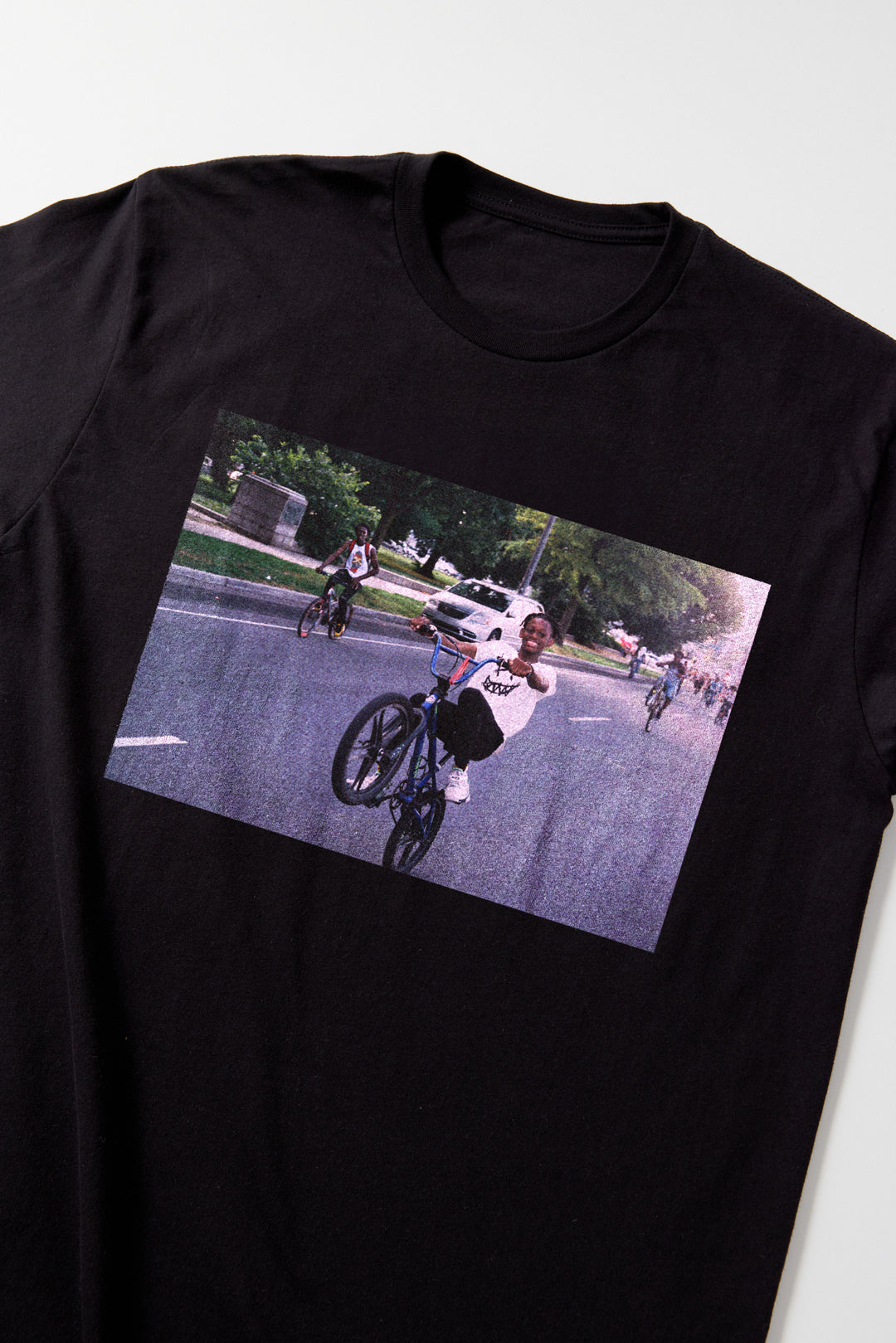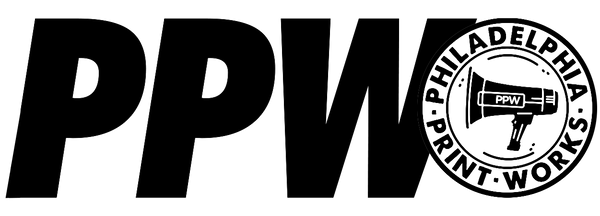Yell Gallery, Microinvalidations and Coconut Tom Yum with the Magical Ms. Mukethe Kawinzi

Interview By Maryam Pugh
It's a biting December evening and I am determined to venture out of my fortress of solitude into the night to explore a new art gallery that I've been hearing a lot about. The show is called INCLUSION/EXCLUSION: THE POETICS OF CARTOGRAPHY and the gallery is called Yell, a small and stylish space nestled along the outskirts of Northern Liberties. Like anyone exploring something for the first time I do my homework. I browse their Instagram, scan their Facebook and peruse their website. The footer of the website reads #FUCKSILENCE. I'm sold. So, I soldier up and head down there. Once I arrive, I'm greeted by a beautiful space with even more beautiful art. I ask around and find out that the curator of the work is none other then Ms. Mukethe Kawinzi, the Founding Director.
Mukethe, I am intrigued by you. You are obviously a fantastic force. Your very presence screams originality, ambition and a firm understanding of self. You seem to have a discernment that defies the youthfulness that you equally exude. That dichotomy comes across in a very majestic way. Can I start by asking you what your name means and what is the proper way to pronounce it?
My goodness, how kind! My name is via my father, who is Kenyan, of the Kamba tribe, a Bantu ethnic group. It’s a traditional Kamba name and one I’m proud to have. I’ve been told it means “beloved,” which I’ll gladly accept: it’s both a beautiful concept and identifies me with one of my favorite novels.
Where are you from? Where is your family from? And, if you relocated to Philadelphia, how did you get here?
I was born in Nashville, Tennessee to a Kenyan father and a Liberian mother. I went to school right outside of Philadelphia and it was just a hop and a skip to move into the city. I'm so happy I did! Growing up in the South as the child of immigrant parents was shadowed by constant feelings of displacement: it’s marvellous to feel as though I’ve found a community.
As a child, were you always drawn to art?
I’ve always had a strong, specific aesthetic sense, which can make me a bit irritating depending on the context. But yes! Two of my first, most passionate loves were photography and typography.
For some reason it still amazes me when I "discover" new and extremely talented people in Philadelphia making a lot of noise. Primarily because Philadelphia seems so small. But, in reality, it's not. It can, however, be kind of siloed. Sometimes you really have to seek the good stuff out. And when you find it, it feels like it popped up over night... like "How did I miss this!?". Have you been active in the Philadelphia community for a while? And, if so, in what ways?
So true! I too am still discovering so much about the city. Like you said: it can be siloed and when you encounter something or someone entirely new it can feel rather rarefied. Myself, I suppose I’ve flitted in and out of various projects and scenes in Philadelphia since 2008, though rarely at the forefront. Yell Gallery is in many ways my first engagement on the front lines of something explicitly artistic.
How was Yell Gallery formed?
It’s been such a thrilling experience so far, and a fantastic way to engage more directly with artists and projects I care about. My partner Rob actually owns the building Yell is housed in and the suggestion for a gallery was originally his. The project seemed outside of my ability at first, but as I considered the thought of directing a gallery space, I was bombarded with too many tremendous ideas to let the opportunity slip away.
Is there any particular reason that you chose Fishtown for your location?
Well, it wasn’t exactly a choice--it’s where the building was!--but I’m thrilled to be in the neighborhood. I’ve long been engaged with the West Philadelphia community and it’s great to become more intimate with another part of the city where compelling, captivating things are happening. I hate to admit it, but I’m one of those West Philadelphians who have to be forced across the bridge and, frankly, the gallery forces me across the bridge!
I think I read that you studied at Swarthmore College. Did you always plan to start an art gallery?
No, and it’s still a shock to me. I’m doing this with very little knowledge and even less expertise! It makes every success feel like a small miracle, which is terrifying and electrifying at the same time.
How do you feel that your time at Swarthmore has defined your approach to the art world post-college? If at all. And do you feel that it was easy for you to find an artistic community outside of college?
I think I’ll always consider myself somewhat on the margins of artist communities. I’m a bit shy and don’t have complete courage in my own artistic impulses. Which is why the curator role works so well for me; I can build intersections between my own ideas and an artist’s works.
Can you also tell us about the #SELFIESHOW? Why selfies?
As a long-term internet nerd, I’ve long been interested in intersections of technology and the construction self. Selfies are public and private, performative and sincere, artless and artful all at the same time. I’m really excited to delve into why we are creating so many of these images, and what we are building with them. My personal selfies function as an undiluted assertion of being, of reinscribing the erasure of black bodies from narratives of beauty. The stories I’ve received alongside some recent submissions illuminate completely different meanings of the selfie. I’m eager to explore the dimensionality of meaning these little snapshots inspire.
Your website says "We are interested in challenging. We think change requires confrontation. We think confrontation is beautiful. Shouting is fun. Come yell with us." Can you please tell us some more about your mission and why you have chosen art as a vehicle for social change?
I think the aesthetic context can be welcoming in a way that provokes conversation and provocative in a way that can inspire progress. Talking about social change is hard! It’s really hard and really big conversations can benefit from starting in the abstract, which art can be very successful at creating a space for.
I'm also interested in your process of curating pieces that meet both requirements of being great art that comments on society? As a clothing company that focuses on social issues it can be difficult to marry the two. How do you reconcile these differences?
For me no reconciliation is necessary! I don’t find an inherent tension between aesthetics and politics. Perhaps it is that the art I find most compelling is axiomatically political: art that explores gender and identity and race and the body. The societal comment needn’t be explicit; in fact, I prefer art with a sense of humor and a bit of irreverence. But so much art accomplishes both, and I’ve never felt a dearth of work that can’t maintain that balance.
What are you excited about right now?
Is there any other acceptable answer but Spring? Get thee behind me, Winter!
What are you interested in working on next?
I’m so excited for our June show: Microinvalidations, a participatory exhibition on assault and abuse in radical communities. Despite progress on various levels, there remains a horrifyingly paralyzing silence surrounding sexual abuse; activist and radical communities are not immune, even when we’d like to believe or pretend that they are. This exhibition is an opportunity for those who have experienced abuse to speak up: on First Friday, the gallery will be a blank canvas where all work, stories, and expressions are welcome to be hung. My hope is that the space becomes a canvas for speaking up and for being meaningfully heard. We’ll have facilitators on hand and close the evening with a panel discussion. When I say “space for confrontation,” this is the type of work and conversation that I care to facilitate and provide space for. The idea of “safe spaces” has become so barren; I want to build room that can become a locus of change.
Have you read any good books lately?
Right now, I’m oscillating between bell hooks’ Rock My Soul: Black People and Self-Esteem, Matt Taibbi’s Griftopia, and a scientifically pedantic fan-fic called Harry Potter and the Methods of Rationality. Each is educating and delighting me in wholly different ways. It’s an odd mix, I know: I contain multitudes?
What did you eat for lunch today?
I gently sipped my way through some coconut tom yum; I’m getting over a particularly heinous flu and it was the perfect mix of aromatics to soothe my ails.

